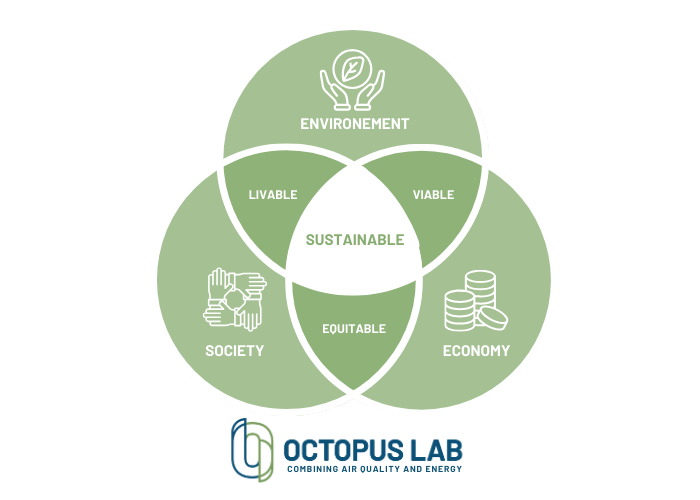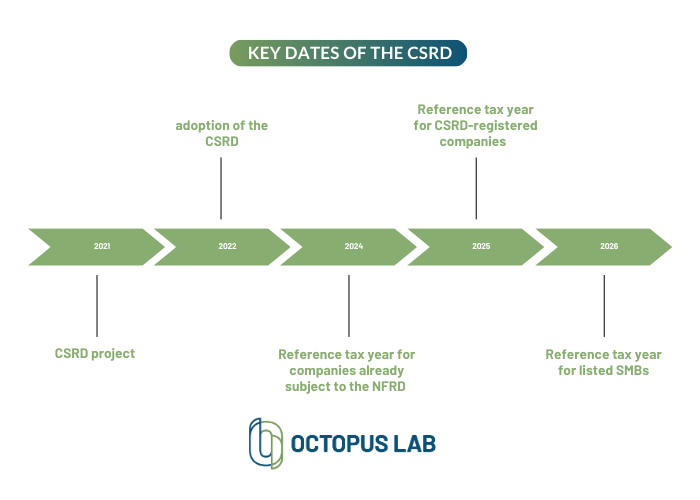BLOG
In recent years, the concept of Corporate Social Responsibility (CSR) has become an essential topic. And for good reason: organizations are increasingly expected to adopt sustainable behaviour in their practices.
However, structuring and formalizing your approach can be a real challenge! This means, in particular, collecting a large amount of data to compile a CSR report and thus report on its commitments.
While the process can be tedious and demanding, there are some tools to make it easier for you! The BMS, for example, is far from being only an energy optimization tool to consolidate your approach. Thanks to its data centralization features, it can significantly facilitate the writing of your CSR report.
According to the European Commission, the concept of CSR refers to “companies’ voluntary integration of social and environmental concerns into their business activities and relationships with stakeholders”.
In other words, it is the implementation of practices designed to have a positive environmental, societal and economic impact.

| Note: According to a Harvard Business School 2021 report, only 46% of executives state that their organizations currently operate with a strong sense of purpose, while an additional 44% are in the process of developing one.
In order to measure the impact of the actions implemented and share the results, it is necessary to elaborate a CSR report.
More than a simple presentation of initiatives, it is a valuable resource to enhance the company’s commitments. This document is essential for assessing the sustainability of an organization and must be based on accurate and reliable data.
In this way, it makes it possible to follow its progress and share it transparently with its stakeholders. It also provides a solid basis for identifying strengths, gaps and areas for improvement in the company.
The constitution of a CSR report must respond to several challenges, particularly in terms of transparency and credibility. Indeed, according to a PwC survey dating from 2023, 94% of investors express doubts about the reliability of companies’ CSR reports!
To meet the expectations of stakeholders, it is therefore essential to present your approach in the most objective and honest way possible.
Suspicion of the veracity of CSR reports can be explained by the widespread use of greenwashing. This misleading communication practice aims to give the company a more sustainable and committed image than it actually is.
Indeed, some organizations conceal or embellish information that they consider unsatisfactory, whether or not they do so voluntarily.
| Note: greenwashing applies primarily to environmental issues. When a company overestimates its social and ethical commitments, it is called bluewashing.
In order to establish a relationship of trust with stakeholders, it is therefore crucial to be transparent about its commitments. Similarly, recognizing its shortcomings with the intention of improving them once the company’s capabilities allow it can be a sign of honesty.
In this sense, it is recommended to avoid deliberately ambiguous messages and adopt clear formulations. But more importantly, your report should include tangible evidence of the actions taken and their impact. In this way, you will meet the expectations of investors as well as customers and employees.
In order to ensure the credibility of your reporting, it must be based on concrete, reliable and accurate data. They are the ones that give credibility and guarantee the reliability of the report. They reflect the real impact of the actions implemented, thus avoiding the switch to greenwashing.
In addition, they provide better visibility on your actions and promote the establishment of a transparent communication with the different stakeholders.
Finally, they help to objectively monitor progress, set realistic goals and identify areas for improvement. In this way, they help inform strategic decisions for the future.
| Note: these indicators help you to position yourself against the objectives of certain environmental certifications or energy efficiency obligations.
You have two options for collecting the data to feed into your report: manual or automated collection.
There are many drawbacks to the manual collection of indicators. First, the process can be time-consuming and complex, especially when collecting data from multiple sites.
This process also involves considerable financial, human and time resources. In addition, the more you develop your CSR approach, the more difficult it will be to process the growing volume of data collected. In this context, updating and analysing information can be a real challenge.
Finally, the manual collection of indicators and their entry can cause errors (incomplete information, input errors, incorrect formats…). For all these reasons, it is recommended to opt for an automated collection solution.
The Building Management System (BMS) is a control system for technical installations. This device uses sensors to automatically collect and centralize large amounts of data on a building.
It offers the possibility of monitoring and exploiting the energy consumption of the company and thus, to measure its environmental impact. It also helps to identify energy-saving fields and define a relevant action plan to take advantage of them.
| Note: The data collected can also be used as part of a carbon footprint to assess your scope 2 emissions.
In the same way, BMS can be used to collect measurements attesting to the quality of the working environment. You have information on indoor air quality (concentration of pollutants, humidity…) and the thermal comfort of occupants.
Thus, the BMS automatically transmits many numerical indicators. The latter are then searchable via a monitoring platform that generally offers analysis tools (comparison, parameter evolution…).
The implementation of one of these devices considerably facilitates the drafting of your CSR reporting: it guarantees a reliable, automated and easily exploitable data collection.
The Corporate Sustainability Reporting Directive (CSRD) is a European directive to standardise corporate sustainability reporting. Initiated in 2021, it replaces the NFRD (Non-Function Reporting Directive), which was considered too inadequate.
This directive requires the companies concerned to report on some of their non-financial practices. In this sense, it shares many common themes with CSR (environmental impact, ethics, working conditions…).
While currently applicable to companies with over 500 employees, the directive will gradually be extended to smaller structures.
In this context, equipping a data collection solution is an essential step to ensure compliance with the CSRD.

Thanks to its centralization and data analysis capabilities, the BMS is an important ally in the preparation of detailed and reliable reports.
At Octopus Lab, we have designed a predictive solution that tracks and improves your buildings performance: INDALO® Supervision. Full-fledged GTB or improvement of your existing model, it offers you the possibility to manage both your energy expenses and your health and comfort parameters.
Thanks to its intelligent regulation capabilities, you can easily reduce the environmental impact of your premises while improving the quality of your workspaces.
Its collection and analysis features allow you to access accurate data on your energy consumption and your indoor environment in order to feed your CSR reporting.
Finally, INDALO® Supervision facilitates the dissemination of your health and comfort indicators to employees twith educational display accessible via the platform or by QR Code.

Bonjour ! C'est nous, les cookies 🍪
Nous sommes chargés de compter le nombre de visites sur ce site internet. Nous aidons énormément les personnes qui travaillent ici, car nous leur permettons d'améliorer le contenu du site internet mais aussi de rendre votre visite plus agréable.